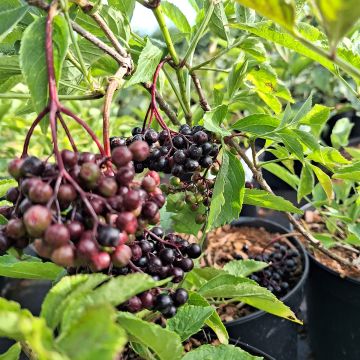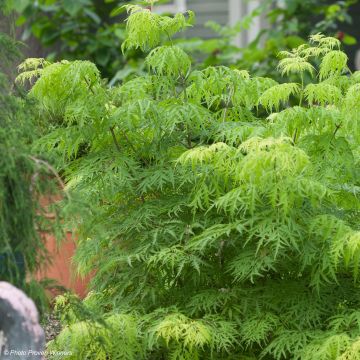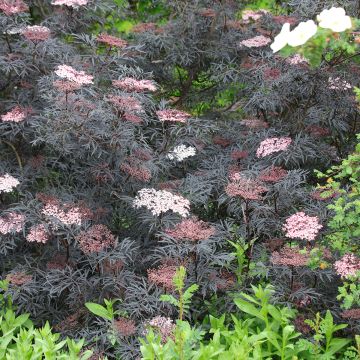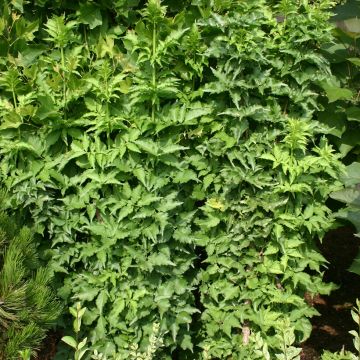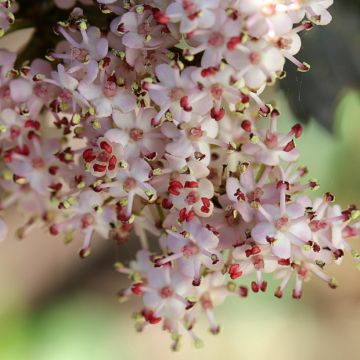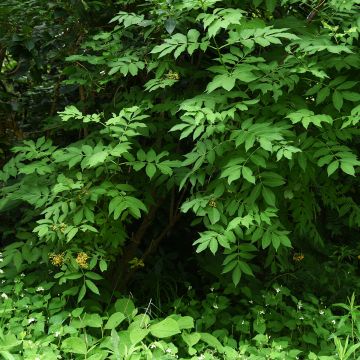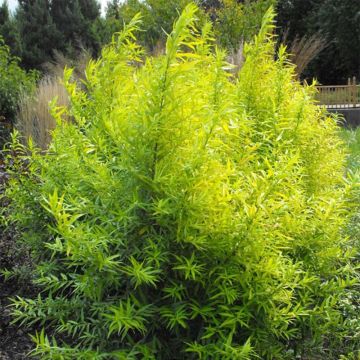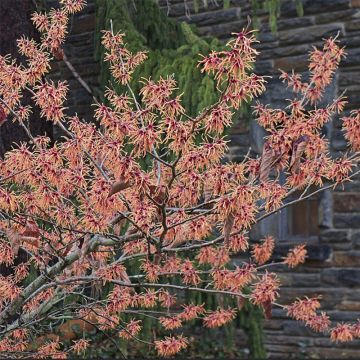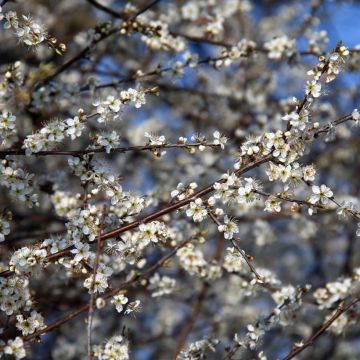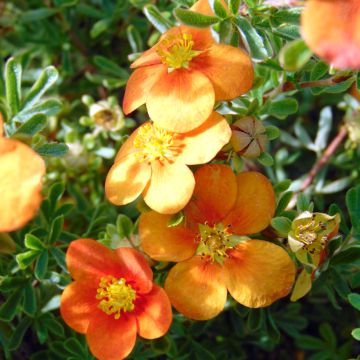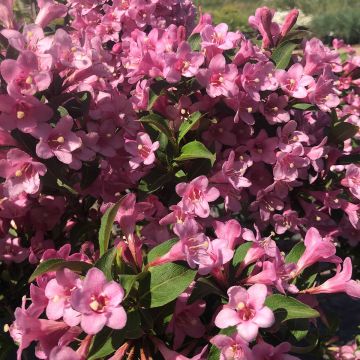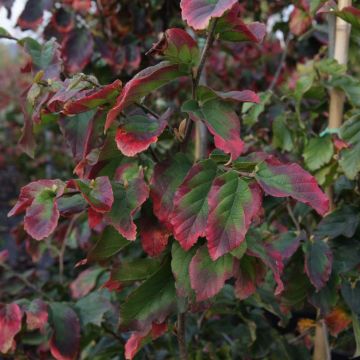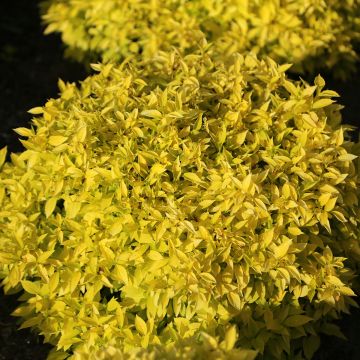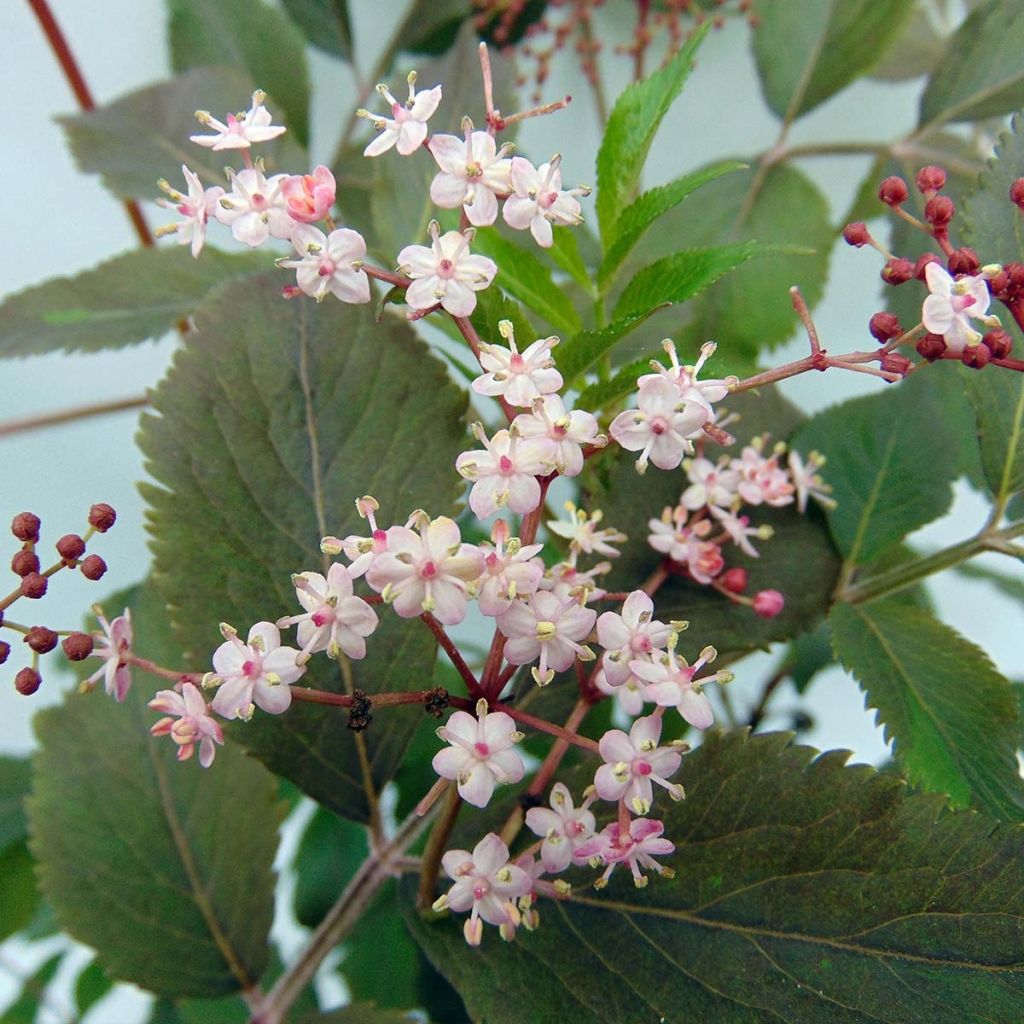

Sambucus nigra Thundercloud - Black Elder
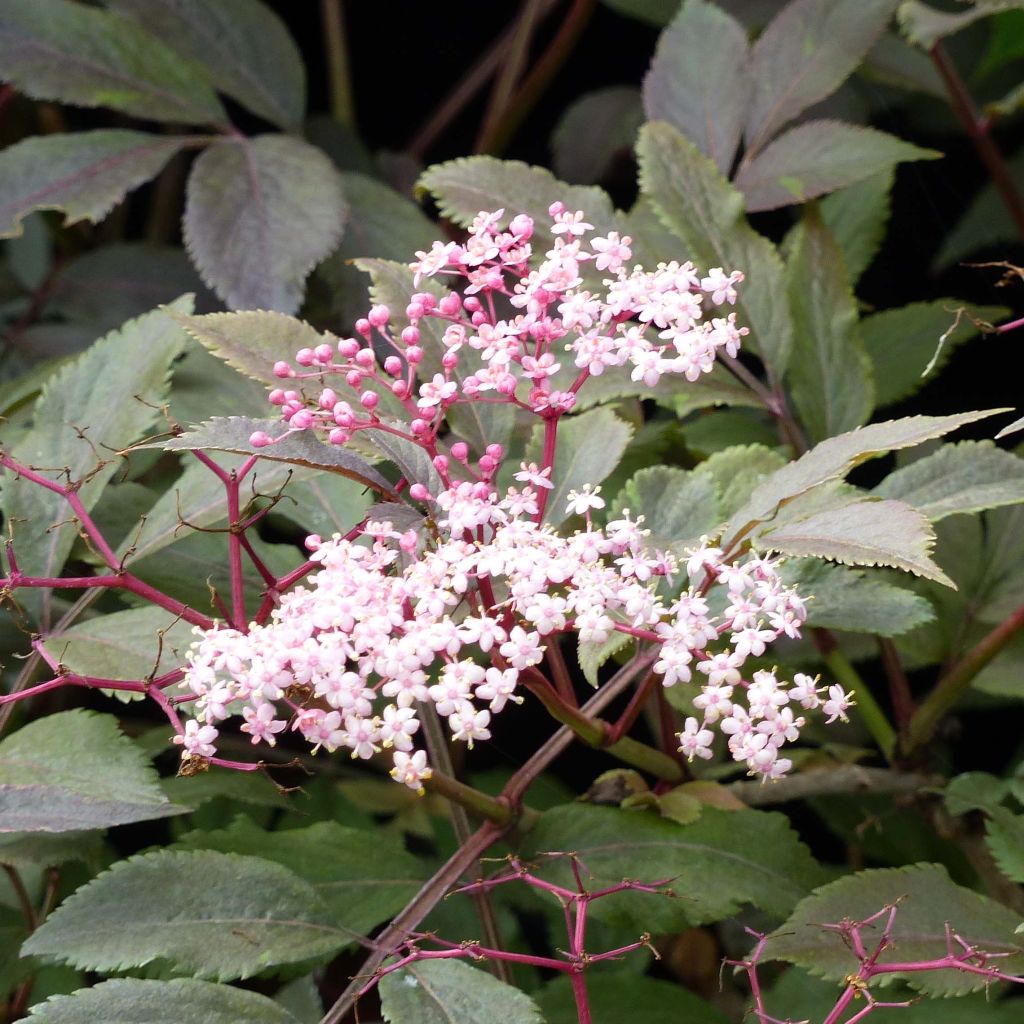

Sambucus nigra Thundercloud - Black Elder


Sambucus nigra Thundercloud - Black Elder
Sambucus nigra Thundercloud - Black Elder
Sambucus nigra Thundercloud
European Elder, Black Elder, Elder, Elderberry, European Elderberry, European black Elderberry
Beautiful elderflower!
sam, 18/08/2024
Special offer!
Receive a €20 voucher for any order over €90 (excluding delivery costs, credit notes, and plastic-free options)!
1- Add your favorite plants to your cart.
2- Once you have reached €90, confirm your order (you can even choose the delivery date!).
3- As soon as your order is shipped, you will receive an email containing your voucher code, valid for 3 months (90 days).
Your voucher is unique and can only be used once, for any order with a minimum value of €20, excluding delivery costs.
Can be combined with other current offers, non-divisible and non-refundable.
Home or relay delivery (depending on size and destination)
Schedule delivery date,
and select date in basket
This plant carries a 24 months recovery warranty
More information
We guarantee the quality of our plants for a full growing cycle, and will replace at our expense any plant that fails to recover under normal climatic and planting conditions.

Would this plant suit my garden?
Set up your Plantfit profile →
Description
Sambucus nigra 'Thundercloud' is a bush with a branching habit, and finely cut foliage of a deep purple colour, turning black. At the end of spring, sumptuous umbels of pink-to-white flowers contrast beautifully with the dark foliage, followed by numerous clusters of edible black berries. Hardy and deciduous like all black elderberries, this variety should be exposed to the sun to express its best dark shades. Thundercloud will catch the eye every time!
Sambucus nigra Thundercloud has a branching habit and reaches 4 m (13ft) in all directions. It belongs to the Caprifoliaceae family. It comes from Sambucus nigra, a wild species widespread in Europe, North Africa, and as far as Asia Minor. The Black Elderberry is an opportunistic and highly adaptable wild species, found in clearings, hedges, fallow land, coastal dunes, and even near human settlements, with which it has coexisted for millennia. It is therefore an undemanding bush and very easy to grow everywhere.
The deciduous foliage of Thundercloud Elderberry is remarkable for its finely cut leaves of a red-purple colour almost black. Note that the leaves are green when they bud. The flowering occurs in May-June in the form of long-lasting and wide pink false umbels, followed by pendulous clusters of dark purple-black fruits in late summer. These berries are highly appreciated by birds and are also edible after cooking.
Easy to grow, Thundercloud Black Elderberry can be planted in spring or autumn, in any ordinary soil which is not too poor, deep enough, and not too dry, although it tolerates periods of temporary drought in deep soil once well established. It requires little maintenance. Plant it in a sunny position for better colours, but it also tolerates a semi-shade position. It is undemanding of the soil, accepting clay, limestone, sand, and even poor soils. The ideal planting mix is half compost/half garden soil. It is very hardy. To promote flowering, prune old branches severely to rejuvenate them and shorten young branches by a third in late winter.
Thundercloud Black Elderberry is an excellent shrub for an informal hedge or is easy to integrate into a shrub bed with spring or summer flowering. With its dense and compact habit and dark foliage, it will harmonize perfectly with light-colored flowers, white or pink, blooming at the same time, such as the purple foxglove 'Alba'.
Report an error about the product description
Sambucus nigra Thundercloud - Black Elder in pictures
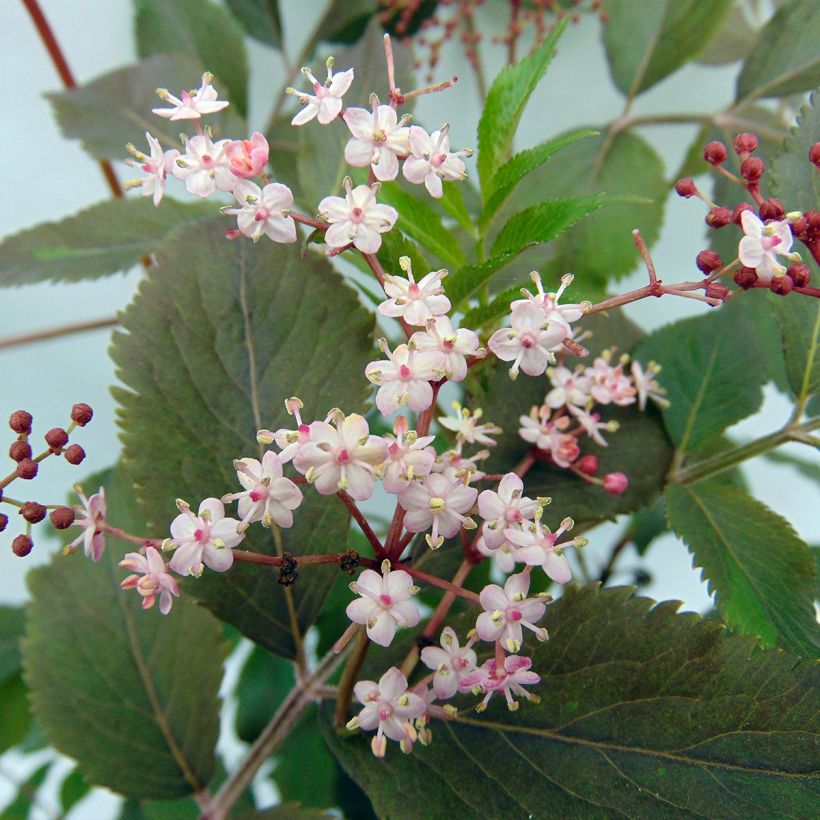



Plant habit
Flowering
Foliage
Botanical data
Sambucus
nigra
Thundercloud
Caprifoliaceae
European Elder, Black Elder, Elder, Elderberry, European Elderberry, European black Elderberry
Cultivar or hybrid
Other Sambucus - Elder tree
View all →Planting and care
Easy to grow, the Thundercloud black elderberry can be planted in spring or autumn, in any ordinary soil, not too poor, deep enough and not too dry, even though it tolerates periods of temporary drought in deep soil and once well established. It requires little maintenance. Plant it in a semi-shaded position, as intense sunlight would scorch its beautiful foliage. It is not very demanding of the soil, accepting clay, limestone, sand, and even poor soils. The ideal planting mix is half compost/half garden soil. It is very hardy. To promote flowering, prune the old branches to rejuvenate them and cut back the young branches by a third, in late winter.
Planting period
Intended location
Care
-
, onOrder confirmed
Reply from on Promesse de fleurs
Similar products
Haven't found what you were looking for?
Hardiness is the lowest winter temperature a plant can endure without suffering serious damage or even dying. However, hardiness is affected by location (a sheltered area, such as a patio), protection (winter cover) and soil type (hardiness is improved by well-drained soil).

Photo Sharing Terms & Conditions
In order to encourage gardeners to interact and share their experiences, Promesse de fleurs offers various media enabling content to be uploaded onto its Site - in particular via the ‘Photo sharing’ module.
The User agrees to refrain from:
- Posting any content that is illegal, prejudicial, insulting, racist, inciteful to hatred, revisionist, contrary to public decency, that infringes on privacy or on the privacy rights of third parties, in particular the publicity rights of persons and goods, intellectual property rights, or the right to privacy.
- Submitting content on behalf of a third party;
- Impersonate the identity of a third party and/or publish any personal information about a third party;
In general, the User undertakes to refrain from any unethical behaviour.
All Content (in particular text, comments, files, images, photos, videos, creative works, etc.), which may be subject to property or intellectual property rights, image or other private rights, shall remain the property of the User, subject to the limited rights granted by the terms of the licence granted by Promesse de fleurs as stated below. Users are at liberty to publish or not to publish such Content on the Site, notably via the ‘Photo Sharing’ facility, and accept that this Content shall be made public and freely accessible, notably on the Internet.
Users further acknowledge, undertake to have ,and guarantee that they hold all necessary rights and permissions to publish such material on the Site, in particular with regard to the legislation in force pertaining to any privacy, property, intellectual property, image, or contractual rights, or rights of any other nature. By publishing such Content on the Site, Users acknowledge accepting full liability as publishers of the Content within the meaning of the law, and grant Promesse de fleurs, free of charge, an inclusive, worldwide licence for the said Content for the entire duration of its publication, including all reproduction, representation, up/downloading, displaying, performing, transmission, and storage rights.
Users also grant permission for their name to be linked to the Content and accept that this link may not always be made available.
By engaging in posting material, Users consent to their Content becoming automatically accessible on the Internet, in particular on other sites and/or blogs and/or web pages of the Promesse de fleurs site, including in particular social pages and the Promesse de fleurs catalogue.
Users may secure the removal of entrusted content free of charge by issuing a simple request via our contact form.
The flowering period indicated on our website applies to countries and regions located in USDA zone 8 (France, the United Kingdom, Ireland, the Netherlands, etc.)
It will vary according to where you live:
- In zones 9 to 10 (Italy, Spain, Greece, etc.), flowering will occur about 2 to 4 weeks earlier.
- In zones 6 to 7 (Germany, Poland, Slovenia, and lower mountainous regions), flowering will be delayed by 2 to 3 weeks.
- In zone 5 (Central Europe, Scandinavia), blooming will be delayed by 3 to 5 weeks.
In temperate climates, pruning of spring-flowering shrubs (forsythia, spireas, etc.) should be done just after flowering.
Pruning of summer-flowering shrubs (Indian Lilac, Perovskia, etc.) can be done in winter or spring.
In cold regions as well as with frost-sensitive plants, avoid pruning too early when severe frosts may still occur.
The planting period indicated on our website applies to countries and regions located in USDA zone 8 (France, United Kingdom, Ireland, Netherlands).
It will vary according to where you live:
- In Mediterranean zones (Marseille, Madrid, Milan, etc.), autumn and winter are the best planting periods.
- In continental zones (Strasbourg, Munich, Vienna, etc.), delay planting by 2 to 3 weeks in spring and bring it forward by 2 to 4 weeks in autumn.
- In mountainous regions (the Alps, Pyrenees, Carpathians, etc.), it is best to plant in late spring (May-June) or late summer (August-September).
The harvesting period indicated on our website applies to countries and regions in USDA zone 8 (France, England, Ireland, the Netherlands).
In colder areas (Scandinavia, Poland, Austria...) fruit and vegetable harvests are likely to be delayed by 3-4 weeks.
In warmer areas (Italy, Spain, Greece, etc.), harvesting will probably take place earlier, depending on weather conditions.
The sowing periods indicated on our website apply to countries and regions within USDA Zone 8 (France, UK, Ireland, Netherlands).
In colder areas (Scandinavia, Poland, Austria...), delay any outdoor sowing by 3-4 weeks, or sow under glass.
In warmer climes (Italy, Spain, Greece, etc.), bring outdoor sowing forward by a few weeks.






























